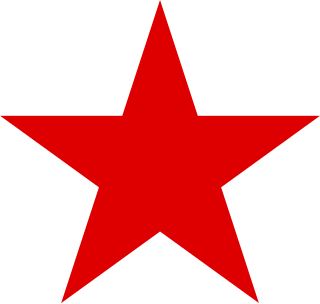
The Socialist Party of Indonesia was a political party in Indonesia from 1948 until 1960, when it was banned by President Sukarno.

Permesta was a rebel movement in Indonesia that was declared on 2 March 1957 by civil and military leaders in East Indonesia. Initially the center of the movement was in Makassar, which at that time was the capital of the province of Sulawesi. However, support for the movement in South Sulawesi gradually dissipated, forcing the headquarters to move to Manado in North Sulawesi.

Guided Democracy was the political system in place in Indonesia from 1959 until the New Order began in 1966. It was the brainchild of President Sukarno, and was an attempt to bring about political stability. Sukarno believed that the parliamentarian system implemented during the liberal democracy period in Indonesia was ineffective due to its divisive political situation at that time. Instead, he sought a system based on the traditional village system of discussion and consensus, which occurred under the guidance of village elders. With the declaration of martial law and the introduction of this system, Indonesia returned to the presidential system and Sukarno became the head of government again.

Andalas University is a public research university in Padang, West Sumatra. Andalas is one of the major public institution of higher learning in Indonesia, and the oldest outside the island of Java. The university is known for its excellence in social sciences and medical program, and has produced numerous distinguished alumni in public and private service. In November 2019, Andalas was ranked fourth best Indonesian research university from a nationwide evaluation conducted by the Ministry of Research and Technology.

Alexander Evert Kawilarang was an Indonesian freedom fighter, military commander, and founder of Kesko TT, which would become the Indonesian special forces unit Kopassus. However, in 1958 he resigned his post as military attaché to the United States to join the separatist Permesta movement where he encountered Kopassus as his opponent. His involvement in Permesta damaged his military career, but he remained popular and active in the armed forces community.

Burhanuddin Harahap was an Indonesian politician and lawyer who served as prime minister of Indonesia from August 1955 until March 1956. He was a member of the Masyumi Party and served as Minister of Defense concurrently with his tenure as prime minister. Afterward, he took part in the unsuccessful Revolutionary Government of the Republic of Indonesia (PRRI) rebellion in West Sumatra.

Sjafruddin Prawiranegara was an Indonesian statesman and economist. He served in various roles during his career, including as head of government in the Emergency Government of the Republic of Indonesia, as Minister of Finance in several cabinets, and as the first Governor of Bank Indonesia. Sjafruddin later became the prime minister of the Revolutionary Government of the Republic of Indonesia, a shadow government set up in opposition to the country's central government.
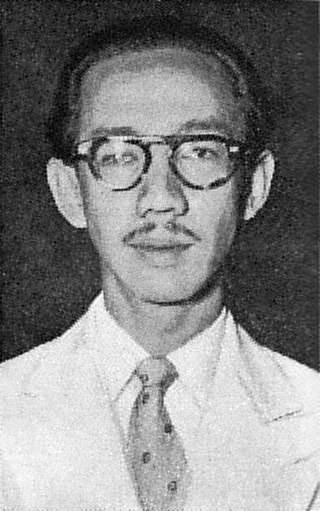
Sumitro Djojohadikusumo was an Indonesian statesman and one of the country's most influential economists. He held ministerial positions under Presidents Sukarno and Suharto intermittently between 1950 and 1978. During his career in government, Sumitro served as Minister of Industry and Trade, Minister of Finance, and the Minister of Research in five different cabinets. He was also the Dean of the Faculty of Economics at the University of Indonesia.

The mayor of Padang is an elected politician who is accountable for the strategic government of Padang, one of the provincial capitals in Indonesia. The position was first held by W.M. Ouwerkerk whe the role was created in 1928 by the Dutch colonial government, while under government of Indonesia it was first held by Abubakar Jaar in 1945, after Indonesian independence.

The military history of Indonesia includes the military history of the modern nation of Republic of Indonesia, as well as the military history of the states which preceded and formed it. It encompassed a kaleidoscope of conflicts spanning over a millennia. The ancient and medieval part of it began as tribal warfare began among indigenous populations, and escalated as kingdoms emerged. The modern part is defined by foreign colonial occupations, battles for independence through guerrilla warfare during Indonesian National Revolution, regional conquests and disputes with neighbouring countries, as well as battles between the Republic and separatist factions. Since the formation of the Republic, the military has played significant role in state affairs. However, in Post-Suharto era, the Indonesian military has retreated from politics, yet it still possesses some influences.
Howard Palfrey Jones was a United States diplomat whose career was focused on Southeast and East Asia. Between March 1958 and April 1965, Jones served as the United States Ambassador to Indonesia during the last years of the Sukarno presidency. He was known for his warm friendship and good rapport with President Sukarno, the first President of Indonesia and the country's premier nationalist leader.
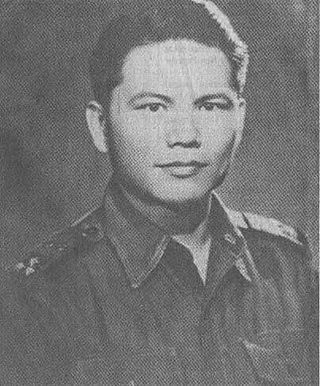
Jacob Frederick Warouw, also known as Joop Warouw, was a military officer involved in the Indonesian National Revolution. After the revolution, his appointments include Commander of VII/East Indonesia Military Territory and Military Attaché in Beijing. He was subsequently involved in the Permesta movement that sought greater regional autonomy from the central government in Java. He was killed by a fractious unit toward the end of the movement.
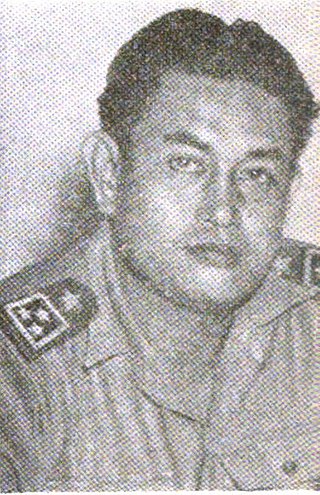
Colonel Maludin Simbolon was an Indonesian military officer, independence fighter, and Minister of Foreign Affairs in the Revolutionary Government of the Republic of Indonesia's (PRRI) Cabinet.

Eny Karim, also spelled as Eni Karim, was an Indonesian politician and civil servant from West Sumatra who served as Minister of Agriculture under the Second Ali Sastroamidjojo Cabinet, and briefly as governor of North Sumatra in 1963.

Colonel Dahlan Djambek was a military officer, independence fighter, and minister in the Cabinet of the Revolutionary Government of the Republic of Indonesia (PRRI). During the Japanese occupation of West Sumatra, he was appointed Chairman of the Sumatra Chokai.
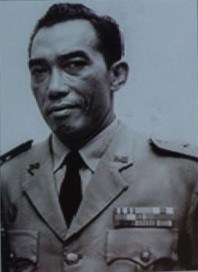
Lieutenant General Djamin Ginting, was an Indonesian military officer and independence fighter from Tanah Karo. He was appointed a National Hero of Indonesia by President Joko Widodo on 7 November 2014.

Rahmah el Yunusiyah was a Dutch East Indies and Indonesian politician, educator, and activist for women's education. Born into a prominent family of Islamic scholars, she was made to leave school in order to get married as a teenager. After a few years of marriage, el Yunusiyah obtained a divorce and returned to her education.

Colonel Ahmed Husein was an Indonesian independence fighter and military leader of the PRRI. Forming the Revolutionary Government of the Republic of Indonesia (PRRI) 15, 1958, in Padang under the leadership of Syafruddin Prawiranegara.
Kaharuddin Datuk Rangkayo Basa was an Indonesian police officer and politician who was the first governor of West Sumatra, serving from 1958 until his removal in 1965. His tenure included the rebellion of the Revolutionary Government of the Republic of Indonesia in the province, which he had been an opponent of before his appointment.
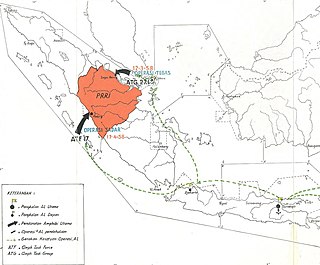
Operation 17 August was a military operation led by Colonel Ahmad Yani which aimed to crush the Revolutionary Government of the Republic of Indonesia (PRRI) movement in West Sumatra, specifically in Padang. This military operation is a joint operation involving the Indonesian Navy, Army and Air Force. "August 17" refers to the password used by Colonel Ahmad Yani.
























